Buenos Aires – The afternoon was beautiful, filled with sunshine, a light breeze, perfect for a walk. I decided to venture along a section of Avenida del Libertador, the Avenue of the Liberator, i.e., José Francisco de San Martín, possibly the most famous of Argentina’s various national heroes. The avenue stretches north to south, near to the eastern edge of the city, the river. I started off here in my neighborhood and figured I’d just keep heading north until I ran out of steam.
This wide boulevard is lined, along both sides by a series of parks and plazas, most of which are dotted with a variety of statues – here a view of the start of my vuelta, or wander; and another of the beautiful hill in Plaza Mitre, named after a former president of the republic, and the founder of La Nacion, one of the countries largest newspapers – Bartolomé Mitre Martínez.
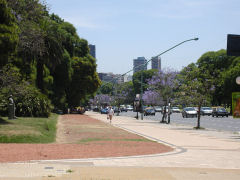
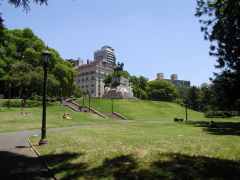
The street is also home to (or nearby to) many of the more famous art museums in the city, including the Museo Nacional de Bellas Artes, or National Fine Arts Museum; and the area surrounding many of the embassies, including the modern sculpted structure of the Chilean Embassy.
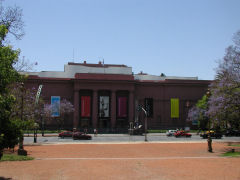
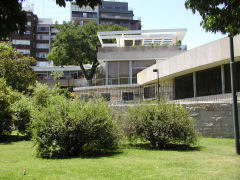
Further along, the street leads into the famed Parque 3 de Febrero, the south end of which I’d briefly toured before. This time, I spent several hours walking the length and breadth of it, including the Paseo del Rosedal, or rose garden, which is wildly in bloom right now.
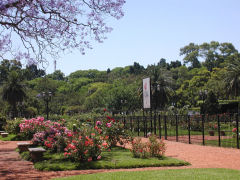
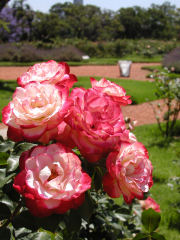
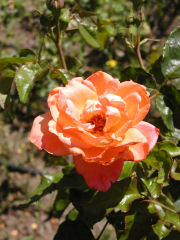
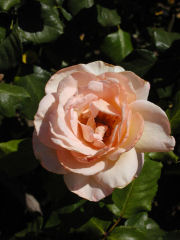
Continuing through the park I encountered the Hipodromo, or horse racetrack, and the beautiful Lago de Palermo.
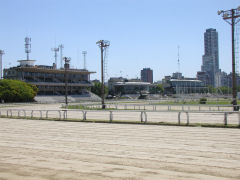
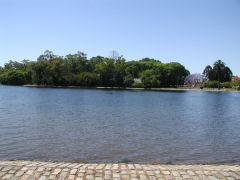
Somewhere around the end of the park, I decided to turn back – the street continues on, to be explored another day. One thing I noted repeatedly on statues was this symbol below – quite mystical looking, and I was beginning to wonder if I’d encountered some sort of brotherhood of mystic Smurfs that many of the great figures of their day had belonged to. Then, suddenly, I encountered it on the gates of the Army headquarters – it’s apparently the coat-of-arms of Argentina.
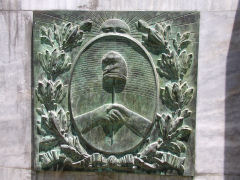
From Wikipedia:
The Coat of Arms of Argentina was established in its current form in 1944. At the top is the famous sun symbol of Argentina, that is also found on the Flag of Argentina. The sun symbolizes the rising of Argentina, and that is why it is in the rising position.
In the center ellipse are two shaking hands that symbolize the unity of the various provinces of Argentina. The hands come together to hold a pike, which represents a willingness to defend the freedom that is symbolized by the Phrygian cap (or liberty cap) on the top of the pike. The blue and white colors are symbols of the Argentine people.
Around the central ellipse are laurels that symbolize victory.
[…] Saturday evening found us wandering our way to the Rosedal, but not to see the roses. Instead, it was to listen to, and hopefully see, Mercedes Sosa, quite possibly the most successful Argentinian singer of all time – nationally and internationally. Of course, we were not alone in heading for this gratis concert in the park, we were joined but a few thousands of other people who had the same idea. At about 7 minutes before 9:00 in the evening, a white helicopter zoomed overhead, and then swooped down and landed backstage. Sharply at 9, Ms. Sosa was on stage to a standing ovation – which was to remain the model of the concert – thousands of folk who’d come and found places to sit on the grass now stood, and remained standing, for two solid hours of music – clapping, cheering, and singing along – slowly pressing closer to the stage in hopes of glimpsing her directly. Not an easy feat, as she was seated in a grand armchair, making her a bit difficult to see – but large screens on either side of the stage kept her in view of everyone. She was joined mid-concert by Diego Torres, one of Argentina’s more recognizable young talents, and at the end of the evening, for her final three songs, by the legendary Charly Garica. No photos – it was dark out, they were using kleig lights shining out from the stage, and the best I could get was a flash photo of a few dozens of folk standing near to me. […]
[…] Buenos Aires – It was time to visit the Rosedal again, I check in on it on and off to see what’s happening in the rose blooming world. This time of year, of course, it’s a riot of color…. […]
[…] evening found us wandering our way to the Rosedal, but not to see the roses. Instead, it was to listen to, and hopefully see, Mercedes Sosa, quite […]